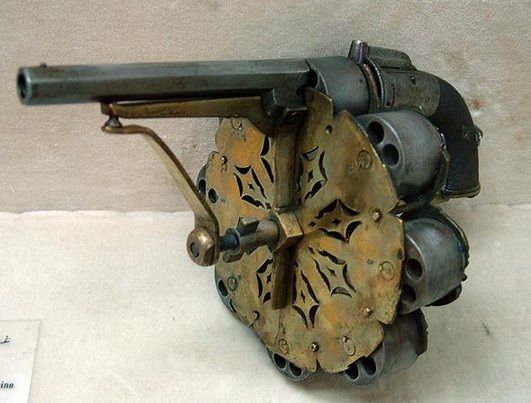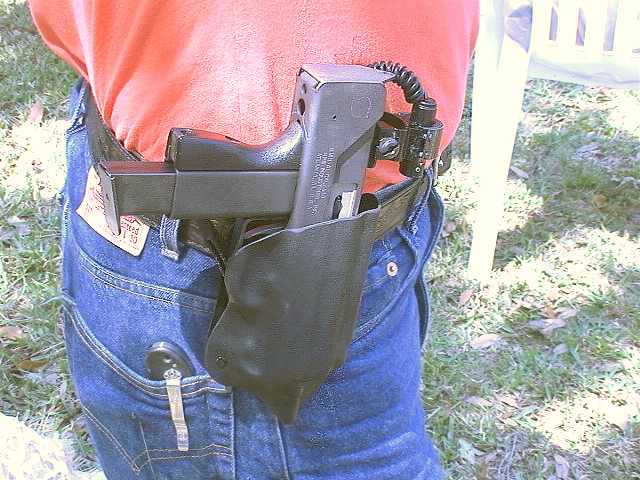Husqvarna wrote:
"how on earth could those chain revolvers have any sort of reliability? how would you carry it? "
Reliability wise, the chambers/chargers are just connected together via their flexible "chain" connection (hence the name) and their advancement movement wise is no doubt slightly different but in essence basically the same principle as the advancement of a more common regular type cylinder.
I.E. as the hammer is pulled back (or if double action....as the trigger is pulled), some sort of mechanism or pawl no doubt is used to push (against a cam on a sprocket that the chargers are captured by no doubt) and advance the next chamber into alignment with the barrel breech. As long as the "chain" connection keeps the same distance between each chamber/charger, the "timing" should be the same from charger to charger as to them properly lining up with the barrel before the hammer falls in double action or the hammer locks back in single action. So I don't foresee a problem with reliability "IF" the chain connection between chargers is always carefully kept the same distance.
Even if the distance between the chain connection of the chargers changed or was off by a couple of thousandths, it is possible that the sprocket rod (that is no doubt used that replaces a standard arbor) that grabs and advances the chargers, would possibly still grab and advance the next charger and align it correctly with the barrel. That would of course depend upon whether or not the design relied upon the chain connectors between the chargers for timing distance, or whether the design relied upon a pawl and cam mechanism and a sprocket that would capture the charger for advancement for the timing distance. Logic would dictate that the latter method would be the best to keep timing on. But I haven't been inside one so I don't know.
As far as "how would you carry it?", I haven't seen a holster designed for one, but logic dictates that you would have a holster that the rear of the holster was cut out to allow the "chain" of chargers to extend out the backside of the holster. No doubt you'd have to be careful when sitting down to make sure you moved the "chain" slightly outward to the side so it wouldn't scratch up or bang against the back of a chair. A holster could also be made that had an extension to its rear that enclosed the chain within the holster, (but obviously that extension would stick out as much rearwardly behind the wearer as just a naked chain sticking out rearwardly from a cut out in the holster.
But then if you carry a MAC submachine gun in a holster, its magazine sticks way out rearwardly behind the holster too. Same as carrying any semi auto pistol with an extended magazine. So there really wouldn't be any difference in carrying the chain gun in a holster than there would be in carrying a MAC subgun in a holster with its mag sticking out as in these below pics.
Three MAC vertical belt holsters. See how the mag sticks out to the rear same as a chain would?
Or perhaps the chain gun revolver could have been carried in a shoulder holster like this MAC shoulder rig.
So a holster no doubt could be used to carry it, but yes it obviously would be more cumbersome than holster carrying a normal non chain revolver. But then again you have vastly increased firepower. So it's a tradeoff between compactness and increased firepower.
SDC wrote:
"Bill, your "revolving shotgun" is actually a Manville tear-gas gun, but it was shown in the "Dogs of War" as being able to fire grenades and some such nonsense; they CAN fire commonly-available flares, though."
You're probably right SDC. I thought that pic I had saved might have been for a tear gas gun, but wasn't sure that it wasn't also made as a shotgun too for riot use, like an early version of a "streetsweeper". Seems like I read that somewhere, but can't recall for sure. But tear gas gun or shotgun, it's an uncommon revolver.
.



















